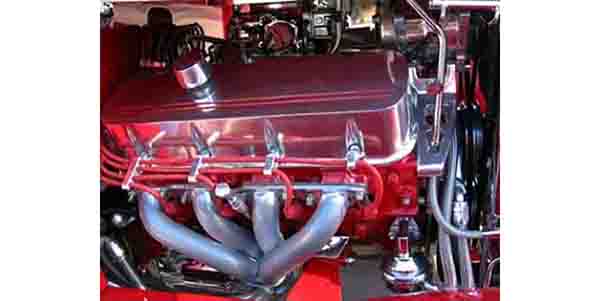In the muscle car heydays of the ’60s and ’70s, manufacturers knew that a few chrome items under the hood not only helped set their high horsepower performance mills apart from their anemic stock counter parts, but could also add to their performance potential. The price upgrade for an SS, Hi-Po or even a Hemi may not sound like much by today’s standards, but 45 years ago it was a sizable investment to move up to the highest performance models. A few badges, some stripes, a 5-spoke wheel and some white letter tires might tell the story on the outside, but all the good stuff that’s going to allow you to fry those tires is inside what appears to be identical to the stock engine, until you add some chrome valve covers and an air cleaner you can see your reflection in. With the air filter element exposed, you just knew the engine could breathe better, and that decal on top stating the horsepower of that beast inside, well that was just the cherry on top. It all came together as a message that screamed speeding ticket, both outside and under the hood.
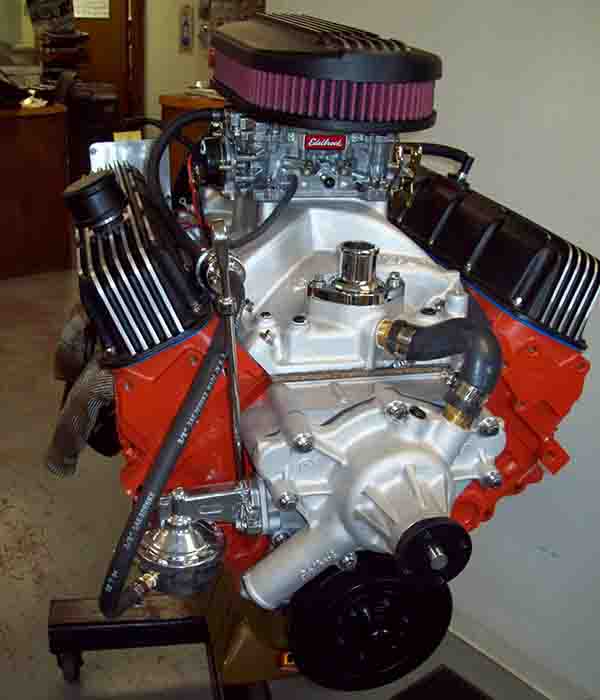
The excitement of what’s under the hood can start for your customers when they pick up their newly rebuilt engine. What might have been dropped off as a bland, greasy, monochromatic, old, stock engine, will start to get the blood flowing a bit quicker once it’s rebuilt, painted up and dressed out in some new chrome, polished, powder-coated or zinc-plated parts. Like picking up your date on Saturday night, the evening looks more promising based on the clothing that that your date is wearing!
Buttoning up the tin on your complete engine builds can have its positives and negatives, I know. Oil leaks can waste a lot of your time and cost you money. Often times we compromise and use old original tin or inexpensive aftermarket replacements that on inspection look problematic. If it looks like a problem, it will be! At that point, a prudent business manager should protect themselves and suggest replacing worn or damaged parts. Refusing to install new parts that don’t fit well is another way to protect yourself and your reputation.
Your reputation can also come under fire if the engine develops an early problem due to debris getting inside the engine, whether it’s your fault or not. Some old rusty or scaly tin just cannot be cleaned well enough to guarantee against flaking and contaminating your precision machined environment and contaminating your oil pump.
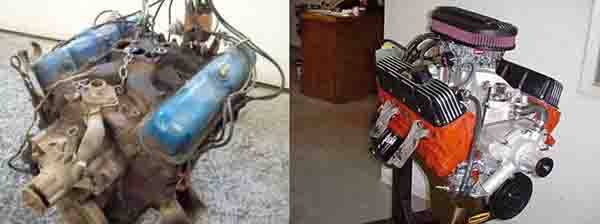
Your options for bolt-ons have never been as plentiful as they are today, and they’re not just limited to small and big block Chevrolets. New stock and dress up parts are available through many sources for just about every application. Names like Edelbrock, RPC, Silver Seal, Milodon, Show Car, Moon Eyes, Proform, Moroso and EngineQuest, to name but a few, are quite familiar to most of us. If one of these suppliers doesn’t have what you want in a style or color that will work for you, you’re working on a unicorn. But fear not. The web is full of additional specialty engine suppliers and one may have what you need, even for unicorns.
Speaking of options, styles and colors, there is much more than chrome available these days. A couple years ago, I tackled the 392 Magnum Charity Engine Build and wrote several articles about it. The goals and design for that engine were based on classic muscle cars from the ’70s. Starting down low, our pan was finished in a zinc-chromate, a finish that was very popular then, and still is today. On top, we chose the satin aluminum manifold as a background to wrinkle black finished cast aluminum valve covers and matching air cleaner. With the fins polished off back to aluminum, the only thing missing from that era was a set of powder blue headers. I often wish I could have done several different design finishes and done one last article on them.
Wrinkle finished aluminum is not right for everyone, but fear not, options abound. Chrome is what was under the hood in the heyday and can work well for your restoration project. Today’s monochromatic theme can look great when it’s a pair of tall lettered valve covers matched with some billet accessories under the hood of a resto-rod. Or maybe your motor is slated to go in a street rod. To match the billet wheels and mirrors, it gets outfitted with a full array of billet covers and a cast aluminum pan. The possibilities are endless and only limited by the budget.
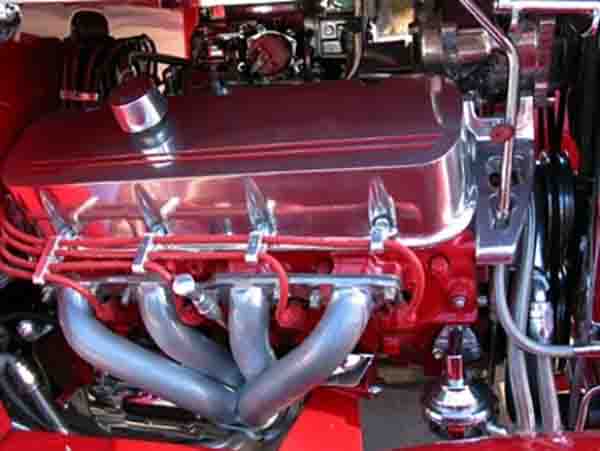
For the engine builder, there may be opportunity to profit by working with the customer to come up with the specific look that might interest them, especially if a problem is found with their tinware, or if it will be costly or questionable to clean it.
If your project has some strong performance upgrades, adding a quart or two capacity to your oil pan could be a good idea. High RPM and windage can keep the vital lubrication and cooling oil out of the oil pan where it is needed. Added capacity could be very good for longer engine life and might be an easier sale than you think. Couple this with an upgraded look, possibly a theme that goes with the rest of the car, and you might make a few extra bucks and add some protection for your work.
Adding a matching set of valve covers seems a natural progression at this point. Again, I can think of a few reasons why they may necessitate a change. Roller rocker arms are a very popular upgrade today. Old, non-adjustable valve trains often need to be replaced if a performance camshaft is installed. They can often be less expensive than a set of stamped or cast rockers for some applications. The adjusting nut, often called a polylock, used with many roller rockers, stands up taller than the rocker arm stud. This may interfere with the installation of stock valve covers. Yes, you have options like valve cover spacers or just extra thick gaskets, but new valve covers could offer the added clearance needed, and a new look.
Now that we’ve cleaned up and sealed up the top and the bottom ends, let’s not forget the front. Timing covers serve their purpose of course, and add a small amount to the look. But function over looks is critical here, not the least of which is sealing the crankshaft or harmonic balancer. We all know about the low cost covers that have too much radius and not enough surface area to hold the front seal. Not a good recommendation no matter how shiny they are. If you’re working with plastic covers, toss the old and go with new. You might be able to buy a new seal that will fit, but you can’t guarantee how long they’ll last. These covers were never designed to have the seal replaced.
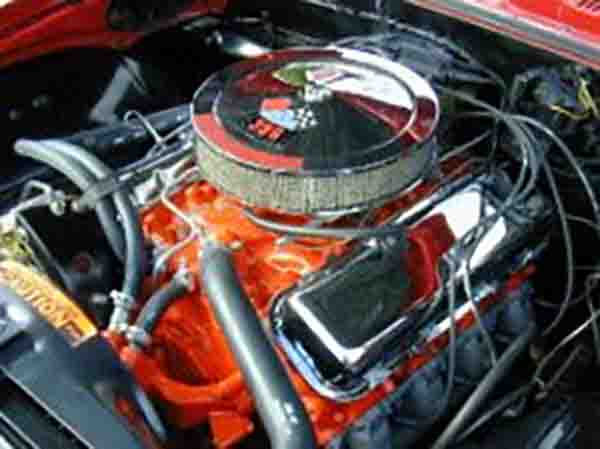
Aluminum covers bring their own problems – or opportunities if you’re into making money. Electrolysis can eat up your water passages. Problems may not be seen until you clean and blast the cover well. Pin holes and deteriorating gasket surfaces could cause leakage and over heating conditions down the road. The time to catch these problems is before it leaves the shop. It’s also a chance to make a sale.
While you’re up front, there’s plenty more to offer. There are aluminum water pumps that not only look good, but can do a better job of cooling a modified engine. And, if you really want to get carried away, there are several companies offering serpentine belt kits that could give an old engine a very modern look.
So how do looks, style and design fit into all of this? I see them as a vehicle to a sale. Telling a customer they need to spend a hundred or more dollars on an oil pan when you’re reaching the end of the build may not be fun, but it could be exciting to show them that the pan or valve covers they need when matched with an air cleaner and maybe a few other accessories could make what’s going on under the hood look as good as what’s going on outside.
I’m sure you’ve seen this, and seen it far too often. The car is beautiful. It has the right stance, the perfect wheel and tire combo and the paint is flawless. Then they open the hood and it still looks old, a little crusty and rusty and, though it has a nice coat of fresh paint, the finish quality is nothing like that of the exterior. The engine is the heart and soul of a cool car. It should look it and it should look like it goes with the exterior style or theme. By selling the “sizzle,” you may find profiting from some “bling” easier than you think.

